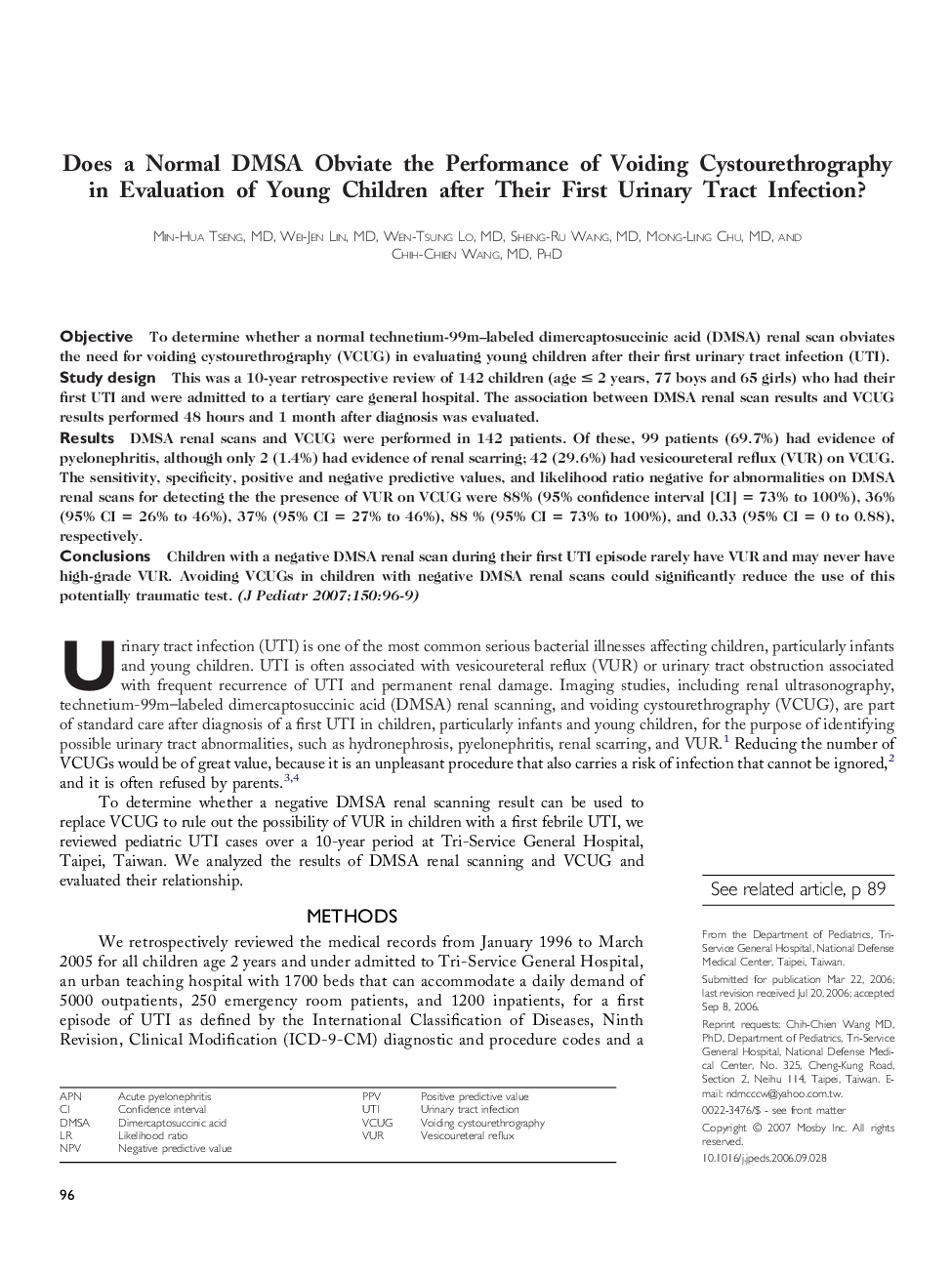| Article ID | Journal | Published Year | Pages | File Type |
|---|---|---|---|---|
| 4168918 | The Journal of Pediatrics | 2007 | 4 Pages |
ObjectiveTo determine whether a normal technetium-99m–labeled dimercaptosuccinic acid (DMSA) renal scan obviates the need for voiding cystourethrography (VCUG) in evaluating young children after their first urinary tract infection (UTI).Study designThis was a 10-year retrospective review of 142 children (age ≤ 2 years, 77 boys and 65 girls) who had their first UTI and were admitted to a tertiary care general hospital. The association between DMSA renal scan results and VCUG results performed 48 hours and 1 month after diagnosis was evaluated.ResultsDMSA renal scans and VCUG were performed in 142 patients. Of these, 99 patients (69.7%) had evidence of pyelonephritis, although only 2 (1.4%) had evidence of renal scarring; 42 (29.6%) had vesicoureteral reflux (VUR) on VCUG. The sensitivity, specificity, positive and negative predictive values, and likelihood ratio negative for abnormalities on DMSA renal scans for detecting the the presence of VUR on VCUG were 88% (95% confidence interval [CI] = 73% to 100%), 36% (95% CI = 26% to 46%), 37% (95% CI = 27% to 46%), 88 % (95% CI = 73% to 100%), and 0.33 (95% CI = 0 to 0.88), respectively.ConclusionsChildren with a negative DMSA renal scan during their first UTI episode rarely have VUR and may never have high-grade VUR. Avoiding VCUGs in children with negative DMSA renal scans could significantly reduce the use of this potentially traumatic test.
